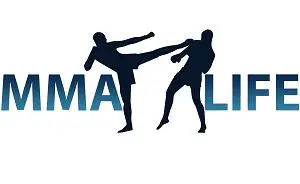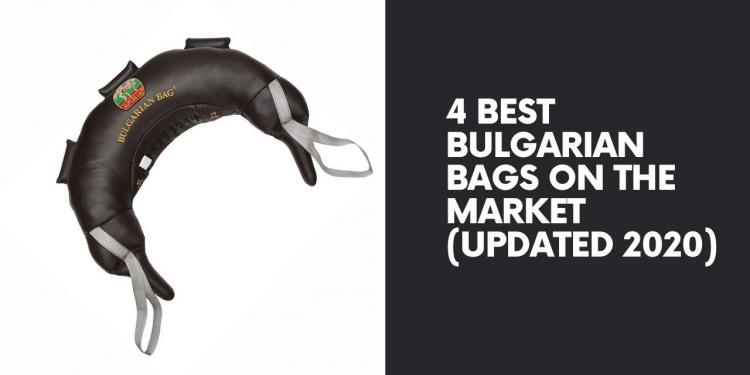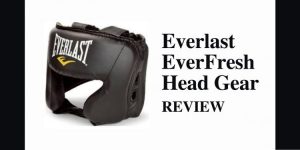The original Bulgarian Bag was designed by Ivan Ivanov, a world-class wrestling coach and athlete. Ivanov noticed there was a lack of a training device that focused on developing both the core upper and lower body strength essential for MMA fighters, wrestlers, and other high-intensity sports. So he created the Bulgarian Bag, likened to that of the Bulgarian wrestling tradition wherein its winners would carry livestock such as ram, calf, lamb, and sheep on their back when they won.
Today, the Bulgarian Bag athletes use is made out of canvas or leather full of wool and sand to exact weight requirements. The training device now has multiple handles and grips to enable a wide range of exercises, making the Bulgarian Bag the only exercise equipment that imitates natural movement and follows a lot of movements on a single load. These reasons make the Bulgarian Bag an effective tool when it comes to bulking up.
If you're looking to buy a Bulgarian Bag and want to learn how it's used, here's our guide along with some of the best Bulgarian Bags in the market today.
Benefits of Bulgarian Bag
The exercise equipment known as the Bulgarian Bag strengthens and improves the muscular endurance of the rotational muscles, legs, back, shoulders, arms, wrists, and grip. It also encourages joint mobility, coordination, and building core musculature. Due to its construction, material, and shape, the Bulgarian Bag is an effective tool in developing agility and quickness in ways that free weights do not.
Variable Resistance
The Bulgarian Bag does not follow traditional static resistance devices the likes of free weights that only limit movement to a singular plane. Instead, it incorporates accelerating and decelerating motions to spin and swing the bag in several angles to the user's body, making the bag effective in improving overall body agility and strength.
This multi-faceted approach to inertia, momentum, and gravity in an exercise is called Variable Angular Resistance training.
Aerobic Effect
The body continues to need huge amounts of oxygen after weight training or a cardiovascular workout. When exercising using a Bulgarian Bag, the body's metabolic rates increase more than it does in cardiov or weight-training alone because the exercise involves both quick dynamic movement and weight training.
This process that the body undergoes is called the aerobic effect, also referred to as oxygen debt. This idea was first introduced by H. Lupton and A.V. Hill in 1922. They theorized that the body needs to replace the oxygen used by the body during weight training or any form of mild to intense exercise.
These days, people have started to use the term ‘excess post-exercise oxygen consumption' (EPOC) to describe what the body goes through as it reverts back to its at rest state or homeostasis. After high intensity bouts of exercise, the metabolic rate of the body increases for a much longer period. The metabolic increase can be seen for up to 18 to 24 hours, depending on how taxing the exercise was on the body.
Functional Grip Training
Due to the shape of the Bulgarian Bag's main handles, the focus on grip is never lost. And because of the many movement patterns involving acceleration and momentum, the grip is challenged extensively compared to other methods of training including the kettle bell.
Since the handles meet at a certain point and are gripped in an overhand fashion, the pinky and thumb are squeezed together using the thenar and hypothenar muscles of the hand, along with other forearm and hand musculature. Additionally, because of the various patterns of movement, such as the spin, which is performed by swinging the bag in a circular fashion, the grip is worked out extensively due the changing force while exercising.
This challenge in the grip is one of its kind and can only be done using the Bulgarian Bag. Even for a short period of time, users have observed an improvement in grip strength, which in turn, improves the force and strength of the upper body. With this improved grip strength, users will find success in many sports such as climbing, football, and other grappling sports.
You can also use Bulgarian Bags along with other forms of functional training, like kettle bells. This will encourage more functional rotational motions that cannot be done with other modalities.
Timing and Rhythm
Similar to a kettle bell, the Bulgarian Bag allows users to exert force rhythmically and in a synchronized manner. This, along with acceleration, momentum, and the right timing, one can put the muscles to contract while controlling the movement of the bag while doing cyclical movement pattern in Bulgarian Bag training.
Dynamic Functional Balance
Because the user is doing dynamic movement patterns that involve momentum, inertia, and ground reaction forces in multiple planes, using the Bulgarian Bag will improve balance and stability while maintaining athletic patterns of movement.
Athletic Conditioning
The design of the Bulgarian Bag allows for dynamic functional conditioning with a focus on strength endurance and power-endurance conditioning. This will prepare the body for sports that require a huge amount of power and strength for prolonged periods, such as martial arts and other combat sports.
Functional Core Conditioning
With the Bulgarian Bag, one can perform functional rotational movement. This is made possible by the bag's design, which also allows for linear movements in the frontal and sagittal planes. The result is a great improvement when it comes to the athlete's stability and strength.
What Bulgarian Bag Size is Right for You?
To get the most out of the Bulgarian Bag, refer to the weight chart below to know the size that's suitable for you.
XL & XXL (20kg, 22kg, 26kg / 30kg, 34kg)
These sizes are recommended for people with enough experience in Bulgarian Bags and can work with this type of equipment in high standard workouts even with additional weight. In order to perform pushing, rotational, and swinging movements with these weights, one must be in outstanding anaerobic condition and strength.
These sizes are commonly used by top level athletes.
L (15kg, 17kg, 19kg)
These sizes are recommended for users with a body weight of 68 to 86 kilograms and are very fit. Bulgarian Bags with these weights are for people who are naturally strong and constantly train hard. Even if you're a frequent gym goer, but have never used a Bulgarian Bag before, these weights can still be quite challenging. These sizes will provide ample pressure on the grip.
M (10kg, 12kg, 14kg)
For those with a body weight of 40 to 65 kilograms and are at least somewhat fit, medium sized Bulgarian Bags should be suitable for you. These sizes are ideal for athletes of all levels and can be used by men and women who are starting out with Bulgarian Bags. Although challenging, lifting these bags is achievable.
These weights are a good companion for rotational and functional movements and can help with endurance, grip strength, muscle endurance, and anaerobic capacity.
S (6kg, 8kg)
Athletes with a body weight between 40 to 65 kilograms and want a relatively light bag can make use of these weights. It can also be used by people recovering from injury, women, and even children. In fact, medium sized Bulgarian Bags are used in physiotherapy sessions and rehab.
XS (3kg, 5kg)
For lighter athletes and beginners, and XS Bulgarian Bag is recommended. This very light bag can be pushed and thrown regardless of your fitness level, especially beginners. These weights are perfect for users not ready to perform high rep training. This size can also be used by children in light fitness activities.
1. Suples Bulgarian Bag Review
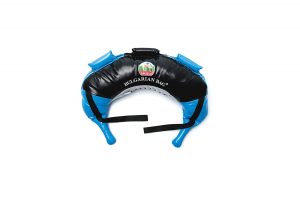
Bulgarian Bag is a name used to describe the half moon shaped fitness equipment, but it's not technically the name of the brand. The company behind the original Bulgarian Bag is Suples, created by Ivan Ivanov. The company creates and designs the best quality of Bulgarian Bags in the market today.
According to their website, Suples Bulgarian Bags are built based on the needs of their customers. The idea of these bags is to bring something fresh to fitness enthusiasts who want convenience on the grip and want their bags to have a bit of color. Suples Bulgarian Bags are for people who are always up for new and exciting training ideas.
There is an original model, which we have also reviewed below, but this variant was actually created with a new handle design in order to make practice movements a lot easier to perform than on the original model. The Bulgarian Bags under the Suples brand is designed for athletes of all levels, fitness enthusiasts, and advanced Bulgarian Bag users.
Pros
- Range of weight options
- Can be used to train both the lower and upper body
- Various handles for a wide range of different movement patterns
- Easy to clean and wipe
Cons
- Expensive
2. Bulgarian Bag Review
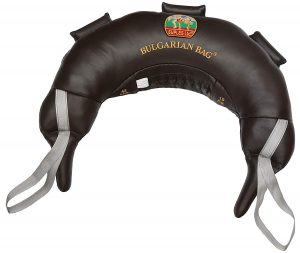
This is also a company of Ivan Ivanov. The original Bulgarian Bag is made of genuine leather and can be used in many types of sports and activities, including mixed martial arts, fitness, Crossfit, functional training, and other types of training where functional movement is required.
The shape of the Bulgarian Bag is ideal for grip training while at the same improving the strength of the upper and lower body. It is available in three different types of handle that gives people the liberty to choose in accordance with their types of training.
The original Bulgarian Bag is a fitness tool that's gaining popularity these days despite having been around for years.
Pros
- Comes in a variety of weights
- Versatile and allows for full body workout
- Hand made with quality leather
- The original Bulgarian Bag
- Comes with a free DVD
- 2-year limited warranty
Cons
- Expensive
3. CoreX Matador Training Bag Review
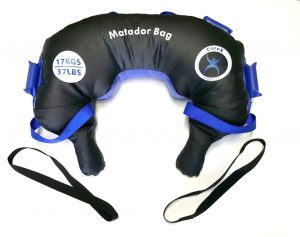
CoreX has received backlash over various trademark infringements with the original creator of the Bulgarian Bag Suples LTD. It's the reason why this product is called a training bag, but its functions are that of a Bulgarian Bag. You can even see that the patent for the CoreX Matador training bag even cites Ivan Ivanov's original patent.
The grips and handles of the Matador training bag are similar to the original, however, it can be custom filled with rubber pellets that help maintain the bag's shape and absorb force during exercises. It's made from synthetic leather and like the original Bulgarian Bag, is available in different weight options according to your level.
Pros
- Horn-like ends that are best for grabbing and performing a wide range of movement patterns
- Near perfect weight distribution over the shoulder blades
- Strong handle and grabbing options
- Less expensive than the original bag by Bulgarian Bag/Suples
Cons
- Not the original Bulgarian Bag
4. Wreck Bag Workout Bag Review
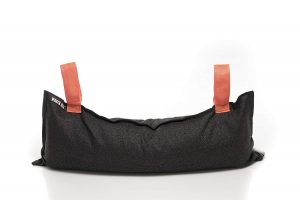
While not exactly a Bulgarian Bag in the traditional sense, the No Sand Workout Bag by Wreck Bag is still a great fitness tool that functions like a Bulgarian Bag. It can be used in both outdoor and indoor training and can help enhance functional strength.
Instead of sand, the Wreck Bag is filled with non-toxic rubber, eliminating the need to buy sand or other fillers. Simply unbox this product and you can use it immediately. This bag comes with pre-filled weights ranging from 5 to 70 lbs (2.3 to 32 kg), which is really convenient.
This is perfect for people who want the function of a Bulgarian Bag but aren't exactly ready to undertake the challenges of using one.
Pros
- Does not need to be filled with sand
- Convenient and non-toxic rubber blend fillers
- Can be used with versatile movements and strength training
- Multifunctional; can be used in over a hundred exercises and movement patterns in one bag
- No shifting due to the lack of sand
- Weather, mildew, and mold resistant
Cons
- Not the original Bulgarian Bag
Bulgarian Bag Exercises Your Can Do
Here are some core movement exercises you can start with on your very first Bulgarian Bag.
Spin
To do the spin, simply stand with your feet apart. Make sure the width is similar to your shoulders and your toes turn out slightly. Grab the Bulgarian Bag in its main handles, stand upright, and start swinging the bag around your head with moderate effort.
To generate momentum, do a downward swing so the bag sways around your head. Your feet should be pressed firmly to the ground to keep your core muscles activated and tight.
Remember to breath using anatomical breathing. While doing a downward swing, exhale. Inhale as your chest expands and the bag swings over your head.
Swing Snatch
Set your feet apart slightly wider than shoulder-width so that the Bulgarian Bag can pass between your legs. Grab the bag by the main handles then start swinging it between your legs. Accelerate using your glutes and hamstrings to swing the bag back over and behind your head. Note that you should be able to feel the bag lightly on your shoulders.
Accelerate the bag aggressively as if you're going to throw it on the floor, but make it swing between your legs instead. Repeat the motion with a knee slightly bended. Make sure your back is straight and pivot from the hips as needed.
Lateral Arm Throw
Grab the Bulgarian Bag on its main handles and swing it over to the right shoulder so that it will reach and rest on your left shoulder blade. Make sure the handles are as close together as possible. Do a slight side lunge on the right leg then throw the bag with force off your shoulder, twist your body, and keep your arms extended while changing your weight and lunging to the left side.
Use your core to decelerate the momentum of the Bulgarian Bag, then speed up the bag to the right side using your loaded leg and your core. Revert to your starting positing with the bag over the right shoulder.
